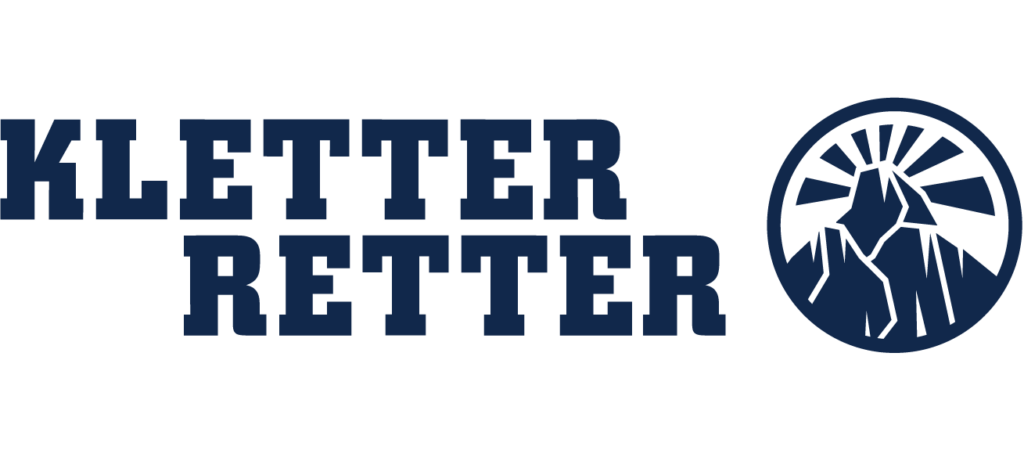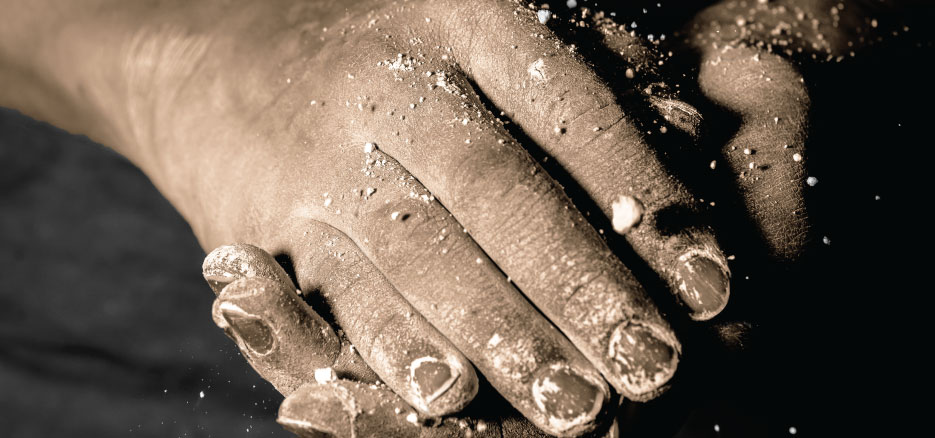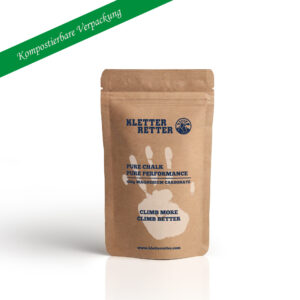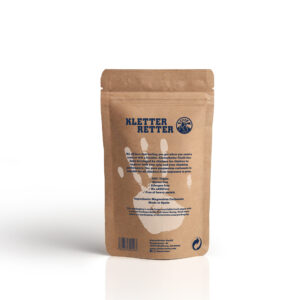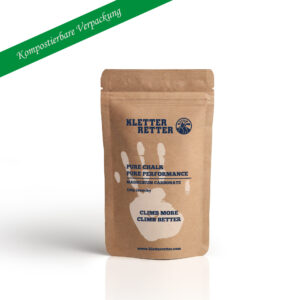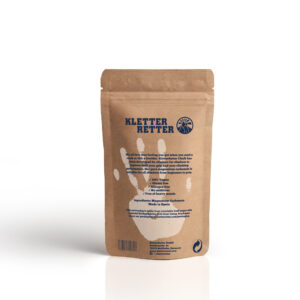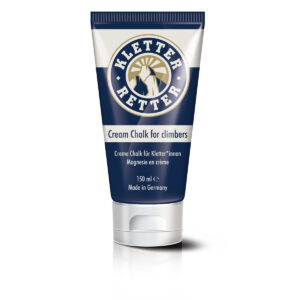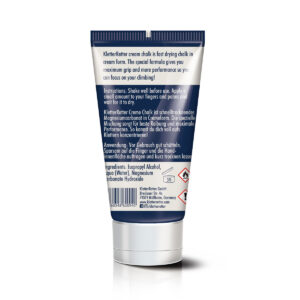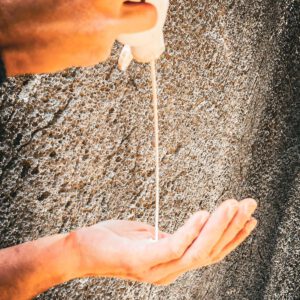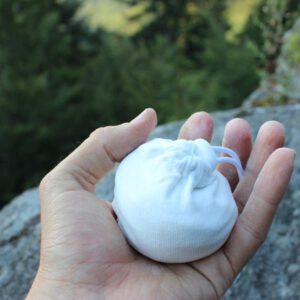KletterRetter Blog
Chalk Talk – different types of chalk
Have you ever googled “climbing chalk” and been overwhelmed with so many different types of chalk? Well, here is a guide to the different types of chalk on the market and tips on how to use them!
1. Loose chalk (Magnesium Carbonate)
Pretty much every climber would have come into contact with loose chalk at some point. You know, that magical white powder that dries out our hands and helps us stick to the wall!
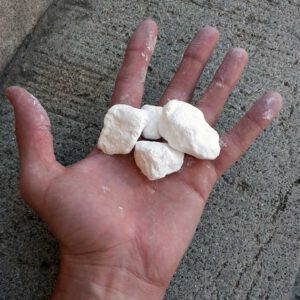
Loose chalk can be ground very fine or left in larger pieces or chunks. Fine chalk is mostly just referred to as loose chalk and bigger chunks of chalk is often called crunchy chalk or chunky chalk. A lot of climbers love squashing crunchy chalk to the size they need in their fingers. It is really a matter of personal preference as to which degree of crunchiness you prefer!
It is fairly common, that chalk manufacturers mix drying agents into their chalk. At KletterRetter, we don’t think this is necessary and all of our chalk is pure, 100% magnesium carbonate, with no additives or artificial drying agents.
Fun fact: Loose chalk is not exclusively used by climbers; it is also commonly used by gymnasts, weigh-lifters, cross-fitters and other athletes in the same form.
2.Chalk blocks
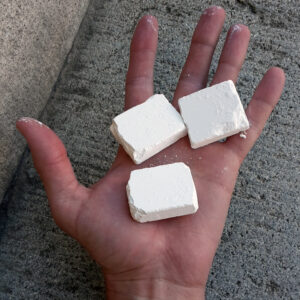
Chalk also comes in a solid, compressed form, known as a chalk block. Some users prefer chalk blocks because they can break it down into any size they like, which sometimes requires more than just finger strength – if you’ve ever seen a climber standing on their chalk bag, you now know what they were probably doing!
Fun fact: Some climbers use chalk blocks for putting tick-marks on routes – please always remember to remove your tick-marks when you’ve finished climbing.
3. Chalk balls or chalk socks
Chalk can be easily packed into chalk balls or chalk socks. These socks are really useful for minimising chalk wastage and chalk dust. A chalk ball is basically like a thin sock, that releases chalk through its material walls when you apply pressure to it.
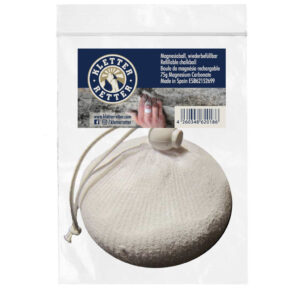
Chalk balls or chalk socks often come in two forms: single use and refillable. We recommend doing your little bit for the environment and using the refillable type.
Fun fact: Chalk balls can easily be used in your chalk bag and filled with fine loose chalk or even crunchy chalk if you are looking for a mess free way to break it in your fingers!
4. Liquid chalk
Ever seen a climber running around in the gym or at the crag with a bottle of chalk? That is probably liquid chalk. Liquid chalk is usually a mix of magnesium carbonate, resin, alcohol and a thickening agent. You apply the chalk to your hands in liquid form and within a few seconds the alcohol evaporates, and you have very dry, evenly chalked-up hands!
For best results, you should always shake your liquid chalk before use!
Fun fact: You can impress your friends with the strong alcoholic smell of liquid chalk!
5. Cream chalk
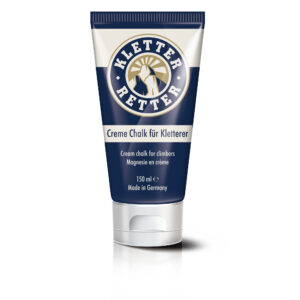
Cream chalk is more or less a thicker, faster drying version of liquid chalk.
We’ve taken it a step further and developed cream chalk with no resin or additional drying agents. Our cream chalk is magnesium carbonate mixed with water and alcohol. The major advantage here is that once the alcohol and water evaporate, all you have left on your skin pure magnesium carbonate. Due to its form, our cream chalk is very easy to use.
So, we hope we’ve given you an interesting insight into chalk! Feel free to post your questions below!
Brand: KletterRetter
Brand: KletterRetter
Brand: KletterRetter
Brand: KletterRetter
Brand: KletterRetter
